Complete Solutions to Multiple choice questions (NCERT) of chapter THERMODYNAMICS of Class 11 book with complete answers and questions
| Class 11 | PHYSICS |
| Chapter | THERMODYNAMICS |
| PRADEEP | Multiple choice questions (NCERT) |
| Number Of Questions | 10 |
| Academic Year | 2023-24 |
An ideal gas undergoes four different processes from the same initial state (figure). Four process are adiabatic, isothermal, isobaric and isochloric. Out of 1, 2, 3, and 4 which one is idabatic.
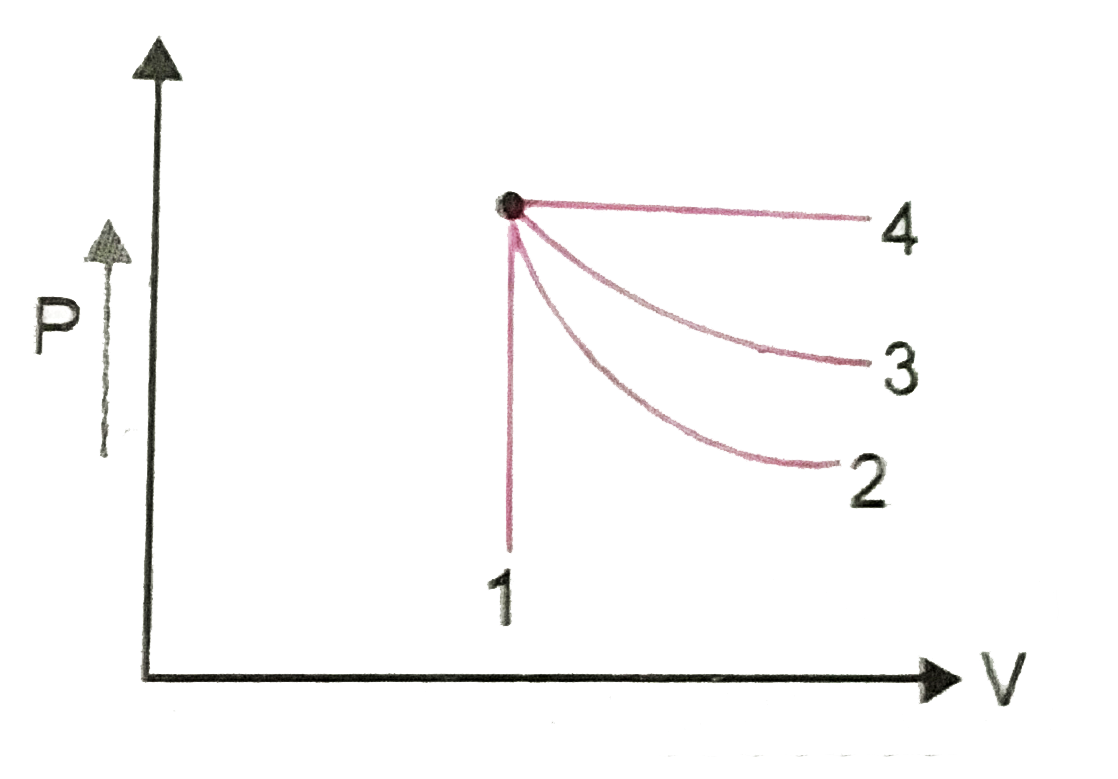
View SolutionIf an avarage person jogs, he produces `14.5xx10^(4) cal//min`. This is removed by the evaporation of sweat. The amount of sweat evaporated per minute (assuming `1 kg` requites `580xx10^(3)` cal for evaporation) is
View SolutionConsider `P-V` diagram for an ideal gas shown in figure.
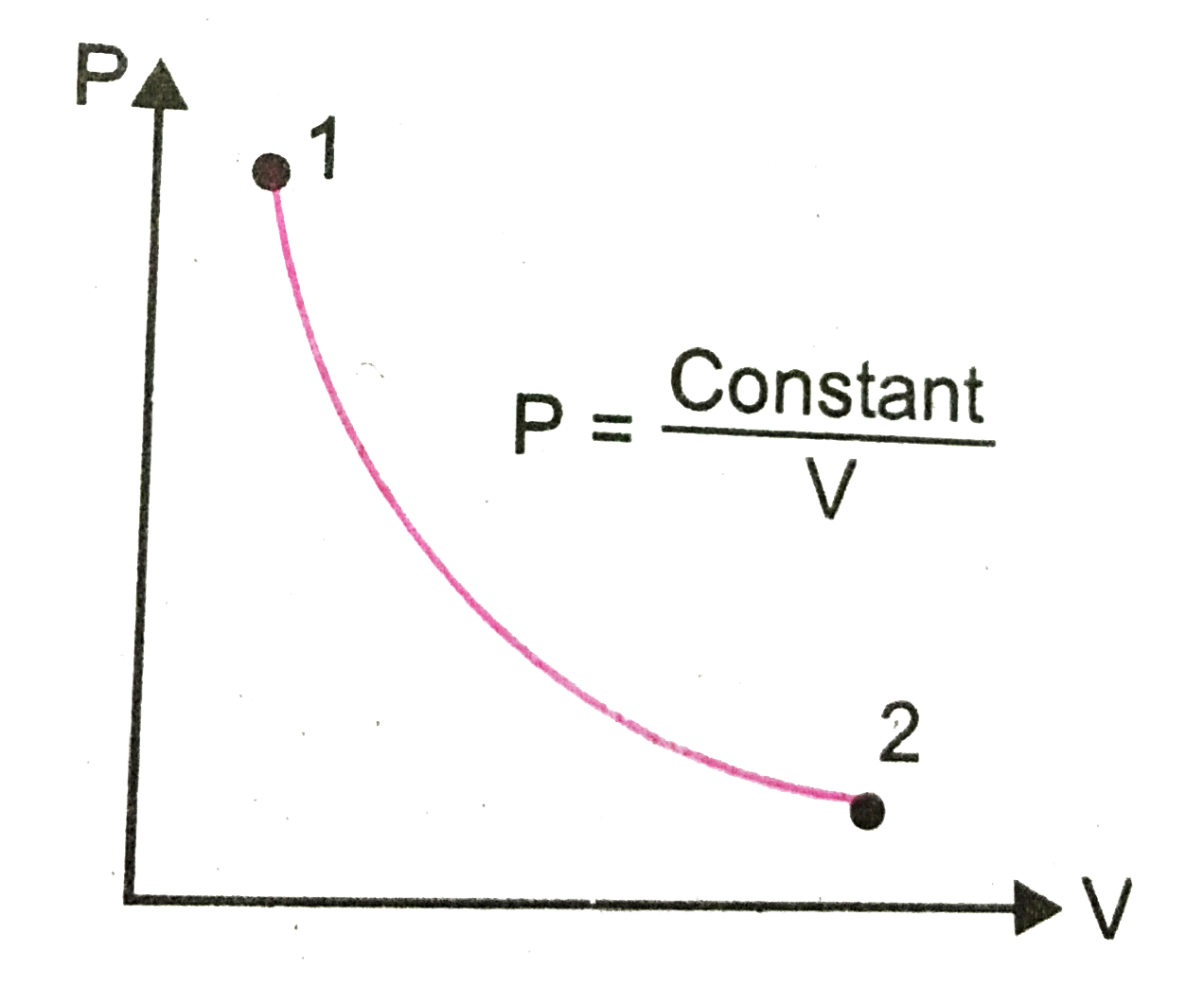
Out of following diagrams(figure). Which represents the `T-P` diagram?
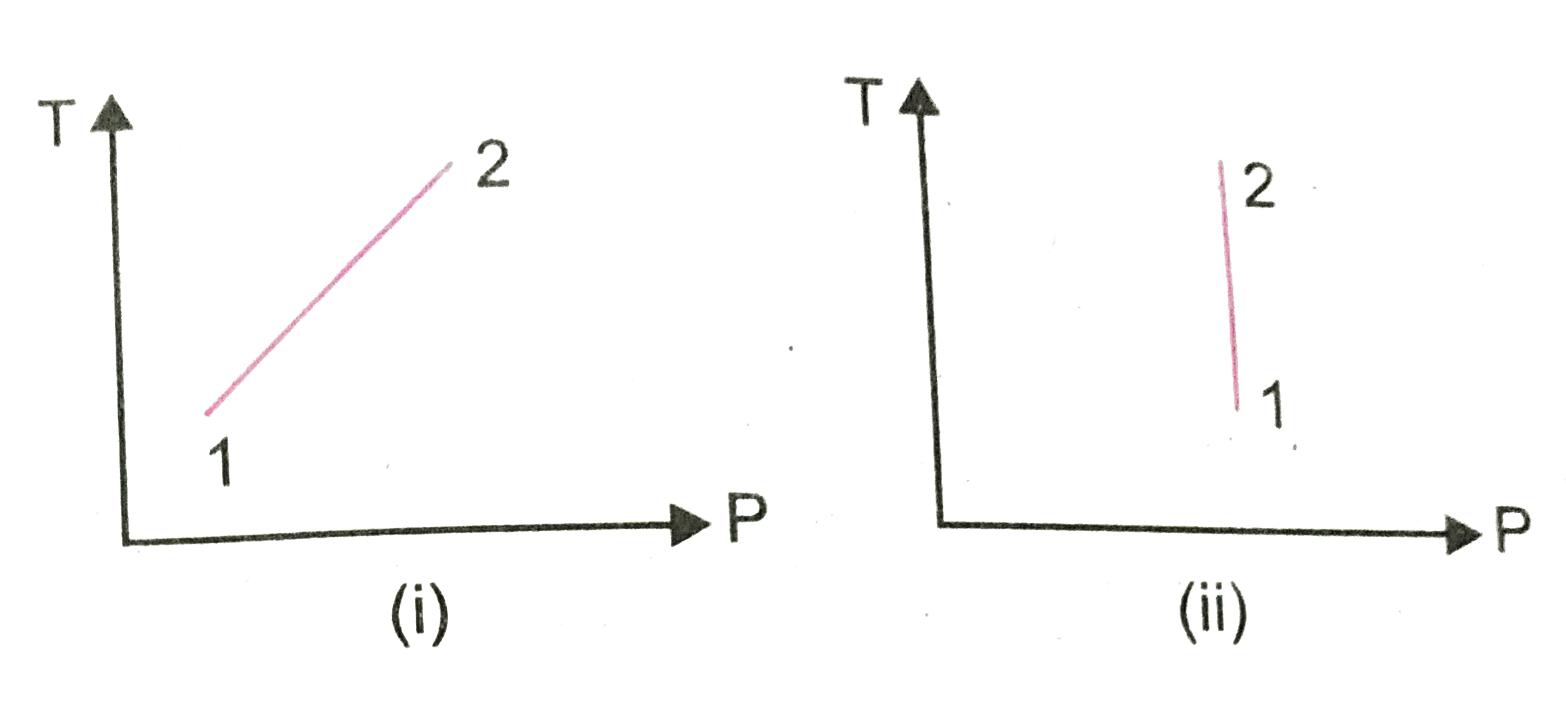

View SolutionAn ideal gas underoges cyclic process of ABCDA as shown in Given `P-V` diagram (figure)
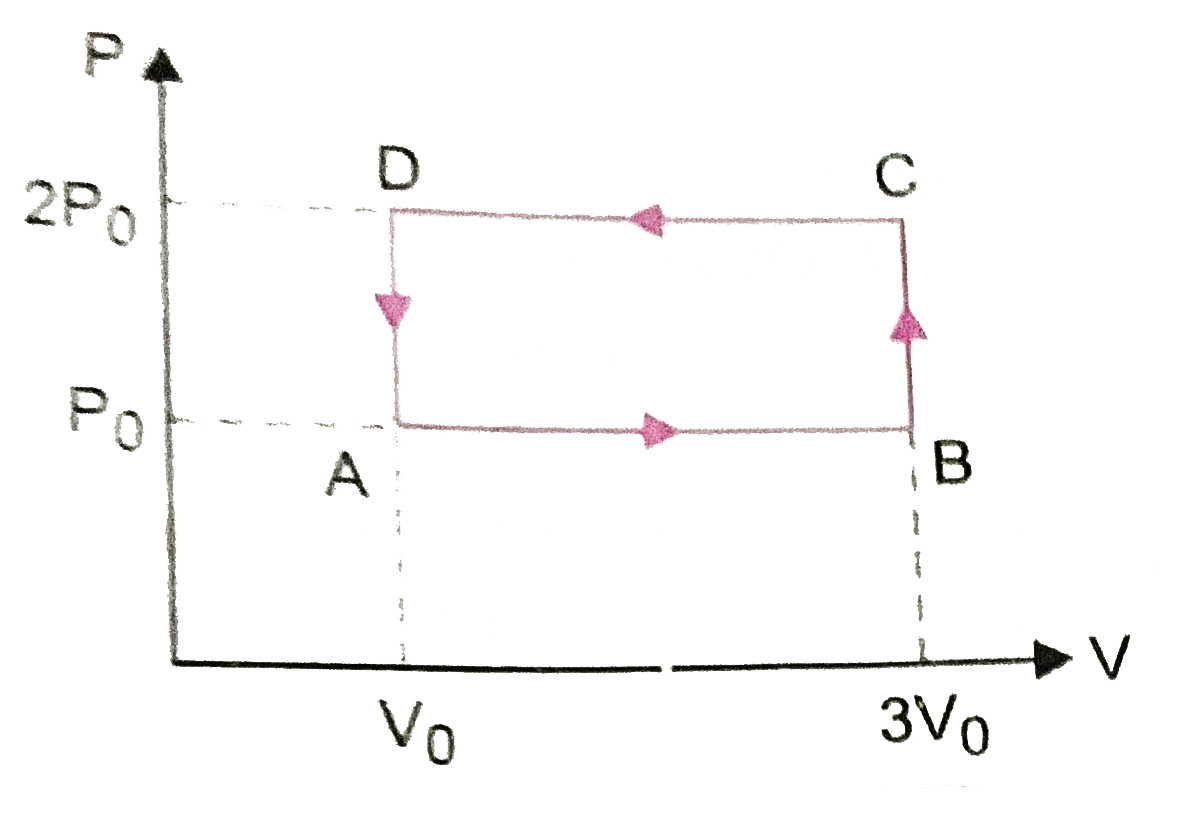
The amount of work done by the gas is
View SolutionConsider two containers A and B containing identical gases at the same pressure, volume and temperature. The gas in container A is compressed to half of its original volume isothermally while the gas in container B is compressed to half of its original value adiabatically. The ratio of final pressure of gas in B to that of gas in A is
View SolutionThree copper blocks of masses `M_(1), M_(2) and M_(3) kg` respectively are brought into thermal contact till they reach equlibrium. Before contact, they were at `T_(1), T_(2), T)(3),(T_(1)gtT_(2)gtT_(3))`. Assuming there is no heat loss to the surroundings, the equilibrium temperature `T` is `(s is specific heat of copper)`
View SolutionWhich of the process described below are irrevesible?
View SolutionAn ideal gas undergoes isothermal process from some initial state `i` to final state `f`. Choose the correct alternatives.
View Solution(figure). Shows the `P-V` diagram of an ideal gas undergoing a change of state from A to B. Four different process I, II, III, IV, as shown in (figure) may lead to the same change of state.
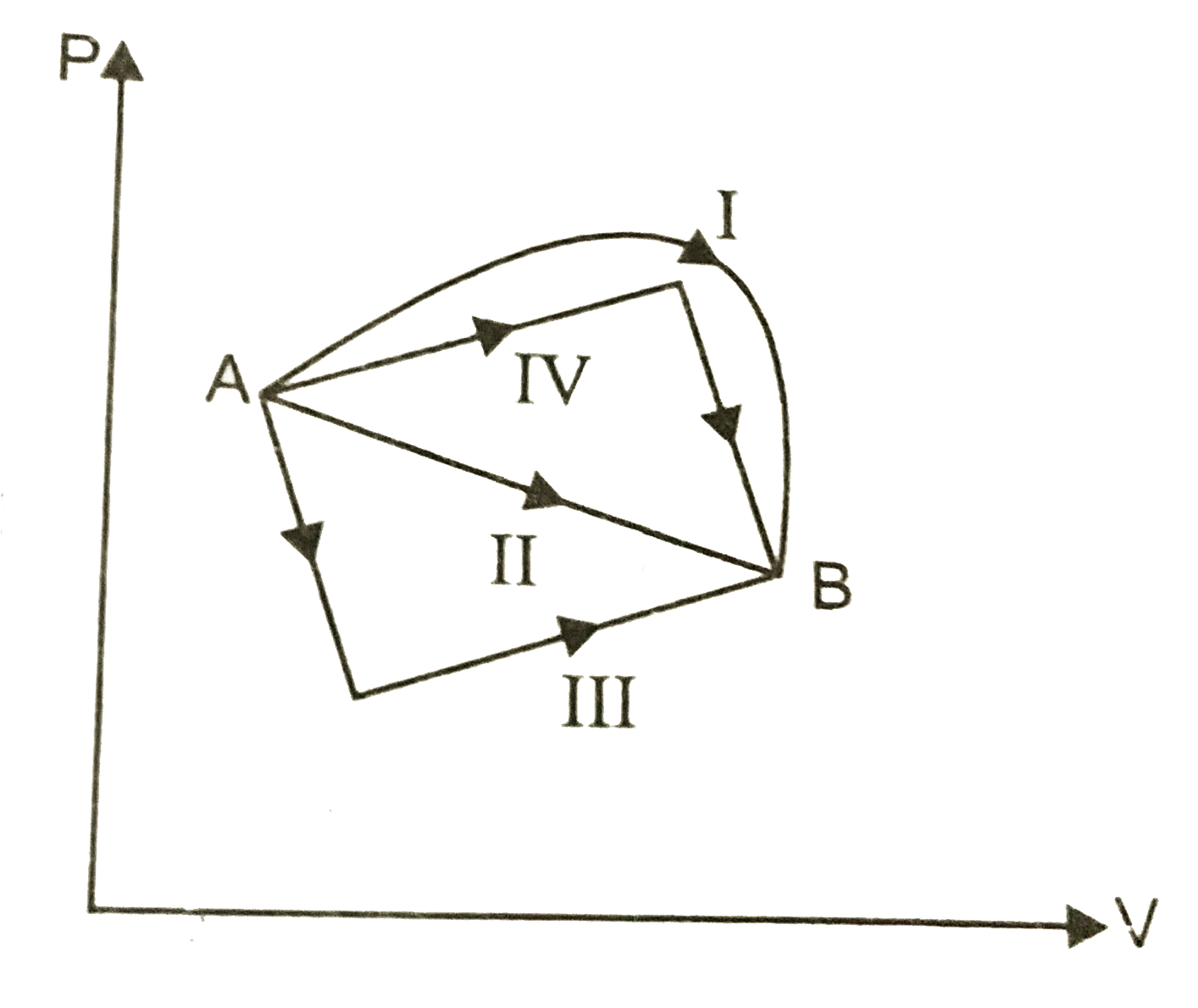
View SolutionConsider a cycle followed by an engine, (figure)
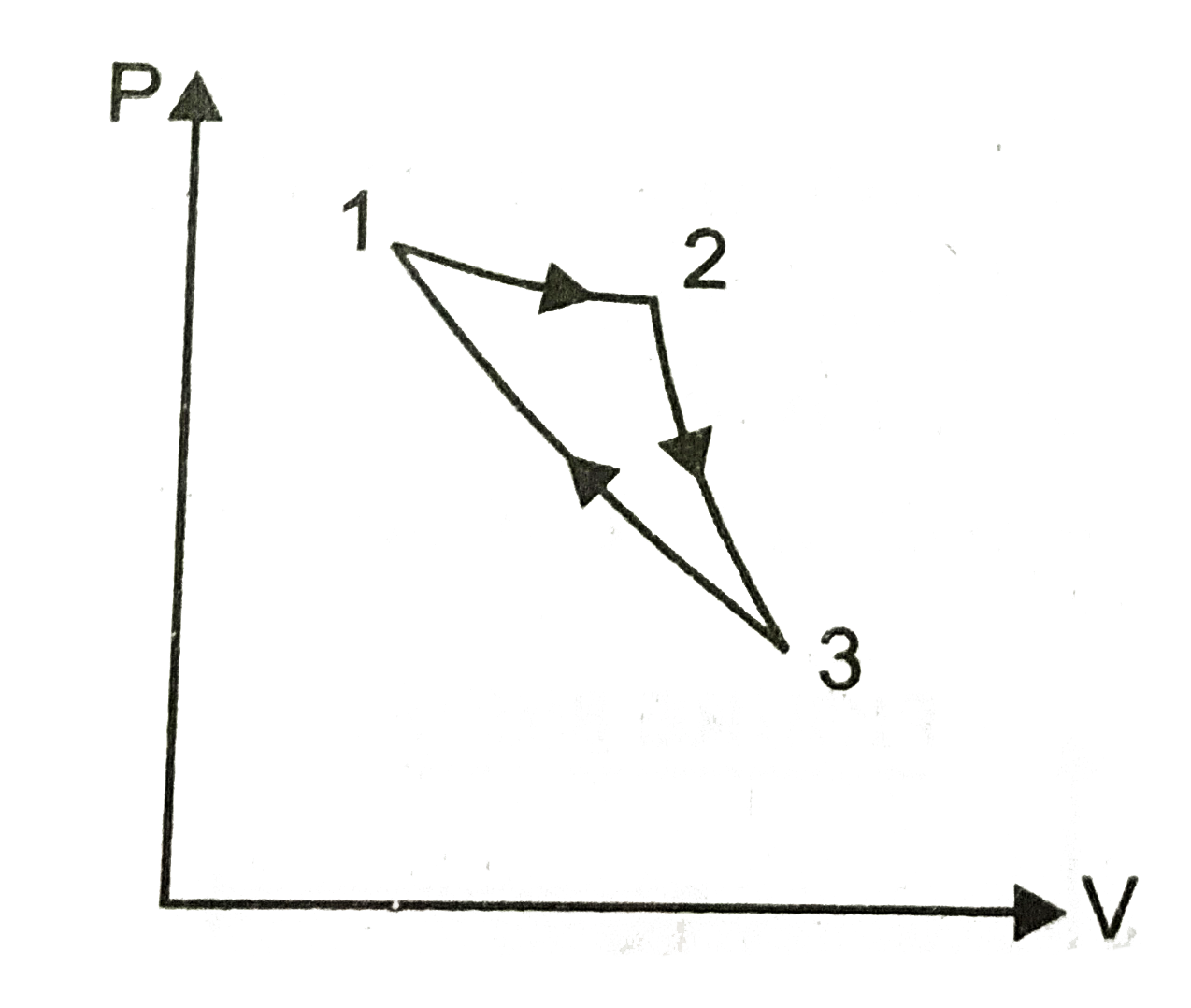
1 to 2 is isothermal 2 to 3 is adiabatic 3 to 1 is adiabatic
such a process does not exist because
View Solution
Multiple choice questions (NCERT) questions and complete solutions for chapter THERMODYNAMICS of PRADEEP PHYSICS (HINGLISH) of Class 11
All Exercises from PRADEEP Class 11 PHYSICS THERMODYNAMICS
- Advanced problems for competitions
- Assertion- Reason Type Questions
- Conceptual Problems
- Curiosity Question
- Higher order thinking skills
- Interger Type questions
- Long answer questions
- Long answer questions(NCERT)
- Multiple choice questions
- Multiple choice questions (NCERT)
- Multiple choice questions.
- NCERT Questions
- Problems for practice
- Sample problems
- Short answer questions
- Short answer questions(NCERT)
- Solved examples
- Value based Questions
- Very short answer questions
- Very short answer questions(NCERT)